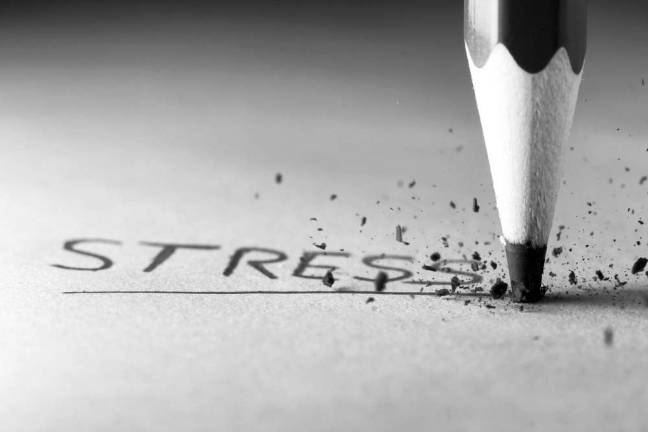My turn Patricia Quinn Helping young people cope

While these are difficult times for many, our students face pressures unprecedented in history that can impact their choices to stay safe from addictive substances.
There are actions family members can take to help our teens be safe from drug and alcohol use, such as keeping a lock box in the home for prescription drugs and turning any unused medication in to the police drop boxes.
• Seventy percent of high schoolers are not getting adequate sleep, which is a strong risk factor for substance abuse according to the Centers for Disease Control. Stress comes from daily reports of financial collapse, terrorist threats, divisive issues and violence at an increasing rate, while the memory of 9/11 remains vivid.
Some herbal teas and other soothing routines before bed can improve sleep and talking to your child about what is bothering them.
• The Substance Abuse and Mental Health Services Administration recently reported that 40 percent of teens do not talk with parents about the dangers of substance abuse.
Creating receptivity to all issues may encourage your child to talk about their concerns in detail. Asking appropriate, open-ended questions to gain understanding of what they may really want to know insures respect and caring, and avoids the appearance of judgment. This will also invite your child to discuss the concerns they might be trying to cope with alone.
• High school students need help figuring out how their particular abilities will best serve their earning power in the future. Helping them make decisions on higher education, with unprecedented college costs and high interest rates on education loans, and an uncertain job market when they graduate is supportive.
Young people sense when family is overburdened and are even more at risk when they don’t want to overwhelmed family with their problems.
• Meanwhile, peer pressure to use substances is a factor that all students face and this uncertain climate makes students even more vulnerable.
According to the Institute for Social Research’s recent survey, the proportion of young people using any illicit drug has been rising gradually over the past four years, due largely to increased use of marijuana - the most widely used of all the illicit drugs. In 2011, 50 percent of high school seniors reported having tried an illicit drug at some time; 40 percent used one or more drugs in the past 12 months; and 25 percent used one or more drugs in the prior 30 days.
Prevention research suggests that if parental attitudes toward alcohol, tobacco and other drugs are favorable students are more likely to use them. Marijuana affects emotional regulation, thought and memory in addition to metabolism and hormonal balance.
Use of marijuana as young as 14 can cause temporary and sometimes permanent disruptions in emotions leading to serious mental disorders like bi-polar depression. It has also been shown to reduce general intellect and increase the likelihood of strokes even in young people.
This drug s effect on memory is caused by the fact that marijuana disrupts synchronized brain cell activity. Marijuana and other substance abuse harms the ability of students to make good decisions.
• To insure our children get the right message, we can be more careful about the example we present to young children through adolescence.
Two other ways to help your teenager to remain safe from substance abuse is to know the signs and symptoms, which are listed at the following Web site of Phoenix House:
http://www.phoenixhouse.org/prevention/signs-and-symptoms-of-substance -abuse/
• Finally, join your local coalition of school-community based prevention services or coalition, which your county s Alcohol and Drug Abuse Council can direct you, too. Call Patricia Quinn or Karen Thomas at 845-986-6422 to join the Warwick Coalition today.
Patricia Quinn, MS, CASAC, LCAT, is the prevention director at the Warwick Valley Community Center.